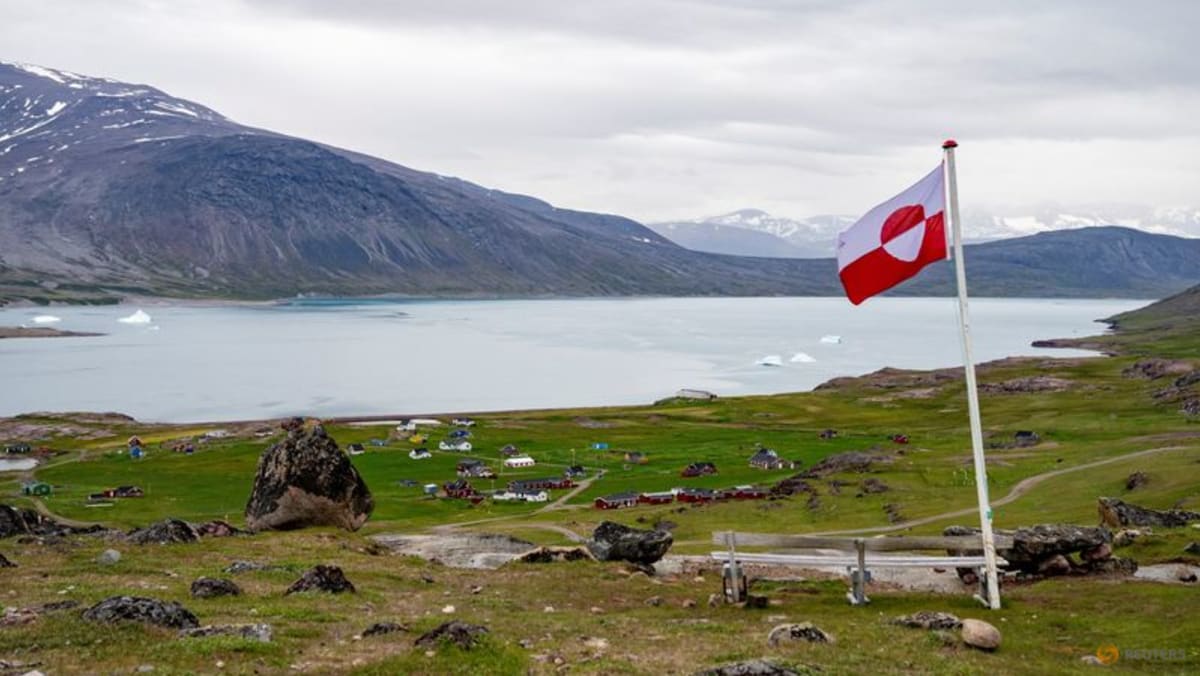Scientists working with NASA’s Perseverance rover state emphatically that they are not claiming to have discovered life on Mars.
But many would regard a rock that the rover just finished studying as “Most Likely to Contain Fossilized Microbial Martians.” The rover has drilled and stashed a piece of the rock, which scientists hope can be brought back to Earth in the coming years for closer analysis and more definitive answers.
“What we are saying is that we have a potential biosignature on Mars,” said Kathryn Stack Morgan, the mission’s deputy project scientist. She describes a biosignature as a structure, composition or texture in a rock that could have a biological origin.
The rock, which scientists named Cheyava Falls, possesses features that are reminiscent of what microbes might have left behind when this area was warm and wet several billion years ago, part of an ancient river delta. The scientists clarified that they did not spot anything that they thought might be actual fossilized organisms.
Scientists have wondered if life could have arisen on early Mars when it possessed a dense atmosphere and flowing water. Martian rocks could hold important clues.
The Cheyava Falls find “is, for me at least, the most compelling rock that we have collected so far,” said Kenneth Farley, the mission’s project scientist and a professor of geochemistry at the California Institute of Technology. If the rock could be brought to Earth for study, he added, “it has the potential to really get at the question” of whether life ever existed on Mars.
Within the rock, Perseverance’s instruments detected organic compounds, which would provide the building blocks for life as we know it. The rover also found veins of calcium sulfate — mineral deposits that appear to have been deposited by flowing water. Liquid water is another key ingredient for life.
Perseverance also spotted small off-white splotches, about 1 millimeter in size, that have black rings around them, like miniature leopard spots. The black rings contain iron phosphate.
The chemical reactions that created the leopard spots could also have provided energy for microbes to live on.
Farley said that analogous features can be seen in Red Rock Canyon outside Las Vegas.
The rocks there are made of strikingly red sandstone, stained by oxidized iron — basically, rust. But, within the red rocks, parts have been bleached white when water containing organic compounds flowed through, and the oxidized iron underwent chemical reactions with the organic molecules.
“The reason you get that white is, you just reacted away to pigment,” Farley said. “I think it’s very likely this same kind of reaction occurring in our leopard spots.”
Organic compounds — molecules that contain carbon and hydrogen — are often but not always the calling card of life. They can also be created by geological process like hydrothermal events that have no connection with life, and the complex structure within the Cheyava Falls rock could have many possible explanations.
With the limited capability of the robotic rover’s instruments, the Perseverance scientists cannot say anything more conclusive.
But one of the key parts of Perseverance’s mission is to drill samples of interesting rocks for a future mission to bring samples back to Earth for scientists to study with state-of-the-art instruments in their laboratories.
“I think this sample comes to the top of the list,” Stack Morgan said.
The Mars sample return mission, however, has hit major developmental and cost snags, putting it years behind schedule and billions of dollars over budget.
“The bottom line is that $11 billion is too expensive,” Bill Nelson, the NASA administrator, said in April. “And not returning samples until 2040 is unacceptably too long.”
Space agency officials announced that they were seeking to solicit ideas from outside companies on how to bring rocks back sooner, at a lower cost. NASA later awarded contracts to seven companies to study the problem. NASA centers are also working on three studies of their own.
What NASA decides to do about the sample return mission will affect the future of Perseverance’s explorations. “We’re all in the same holding pattern waiting to see what might transpire,” Farley said.
Much depends on how the samples will be transferred to the sample return spacecraft. One possibility is for Perseverance to simply drop them somewhere, and the next mission will go pick them up. But if Perseverance is to bring the samples to the return spacecraft, rather than have the samples collected by another robotic vehicle, then the mission managers will need to plan how to make that drive. For now, scientists have plans for the next year and a half that Perseverance will undertake regardless — to drive out of the crater, known as Jezero, that the rover is exploring, and onto the rim.
Cheyava Falls, which Perseverance started studying last month, was one of the last stops along the riverbed.
For the names of the rocks, the Perseverance team pulled together a list of national parks and preserves from around the world. “We happen to be in the Grand Canyon,” Stack Morgan said. “And Cheyava Falls is the highest waterfall in the Grand Canyon.”
Cheyava is the Hopi word for “intermittent waters,” “which turns out to be incredibly appropriate” for a river channel, now dry, on Mars, Stack Morgan said.
Although the landing site for Perseverance at Jezero crater was selected because a riverbed was thought to be the most likely place to preserve signs of ancient life, more than three years of exploration have passed without uncovering any compelling biosignatures.
Farley said that the lack of biosignatures did not mean the mission had been a disappointment until now. The variety of rocks that have been collected have the potential to answer a wide variety of geological puzzles on Mars.
“Looking for evidence of past life is a really important goal,” he said. “But it’s also a goal that, let’s just call it, high risk, high reward.”
Leaving the riverbed does not mean leaving the search for past life behind. The impact that carved out the Jezero crater likely created hydrothermal systems along the rim of the crater, which might have provided habitable environments for life.





















Discussion about this post